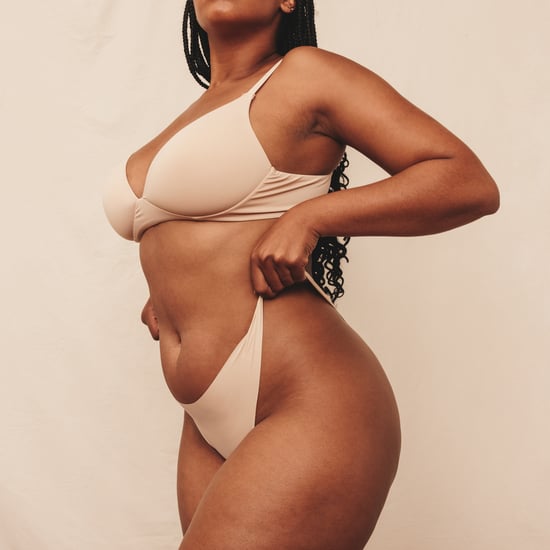What Is Responsive Desire?
It's OK If You Only Feel Horny After Your Partner Makes a Move

While the media has often pushed the narrative that people should want and crave sex all the time, that's just simply not the case. Though you may see plot lines where characters immediately throw themselves at each other in sexy Netflix shows, this sort of spontaneous desire doesn't always translate to real life. In fact, it's pretty common for people to experience the opposite type of attraction, called responsive desire.
Responsive desire occurs when someone feels a sexual attraction to someone only after they experience physical touch or establish an emotional connection, says clinical psychologist Lisa Lawless, PhD, CEO of Holistic Wisdom. And yes, it's perfectly healthy and normal.
Though neither type of sexual desire is better than the other, people who have responsive desire may think they're "broken" because getting in the mood may not come as easy for them. But that couldn't be further from the truth.
Below, Dr. Lawless explains more about responsive sexual desire, why you're not "broken" if this is your desire type, and how to tap into the good parts of responsive desire.
What Is Responsive Desire?
Also referred to as responsive sexual desire, responsive desire occurs when someone "feels a sexual attraction to someone when they experience physical touch or an emotional connection," Dr. Lawless says. Once someone with responsive desire feels connected, "they will begin to feel more of an urge to engage in sex."
Think about it like a warmup. Someone with responsive sexual desire may need to start by cuddling or having a deep, emotional conversation with their partner before wanting anything to go further. This can include things like holding hands, hugging more, giving each other a massage, showering together, and more. Others may simply need their partners to make the first move in order for them to feel the sexual desire.
Of course, you are not broken if this desire type resonates with you more than spontaneous desire. It just means your mind and body may require deeper connection or intimacy to feel attraction — and that's not something to be ashamed of.
What Is Spontaneous Desire?
Spontaneous sexual desire is going to be more similar to what you might see on shows like "Bridgerton" or Netflix's new limited series "Obsession." It's what happens when people can feel sexual desire for no particular reason and at any given moment, Dr. Lawless says. And unlike those who have responsive desire, people with spontaneous desire don't need a "warmup."
The biggest difference between spontaneous desire and responsive desire is that people who have responsive desire may require more stimulation before getting in the mood. "Responsive desire means giving yourself enough stimulation to get into the mood for sex, while spontaneous desire means you're already in the mood," Dr. Lawless says.
However, one is not better or more "normal" than the other. In fact, Dr. Lawless notes that it's "quite common" for people to experience both responses in different periods of their life.
How to Tap Into Your Responsive Desire Type
Understanding that you have a responsive desire type is a great first step. This way, you'll be able to "communicate your needs as well as identify what motivates you sexually," Dr. Lawless says. The fun part is learning what motivates you sexually.
Start by paying attention to when you experience horniness. "Explore what makes you feel sensual," Dr. Lawless says, taking into account the environment, type of touch, and emotional intimacy involved. Did you feel some type of way when your partner softly touched you on the back? When they played with your hair? After they verbally told you how much they care about you?
All of this is important information to note (or even physically write down) as you explore what gets you going. Then, once you have a good sense of what has made you feel horny in the past, communicate that with your partner.
You can even take some time to explore yourself. "Masturbation can be helpful, as it can increase libido as well as teach you what pleasures you most without the added pressure of a partner," Dr. Lawless says. Think about what you like to listen to or watch when you're masturbating — and don't forget to note what made you want to masturbate in the first place.
If you're exploring with a partner, remember to be patient with yourself. Give yourself "the space and time to feel sexually comfortable," Dr. Lawless says. She suggests engaging in nonsexual forms of intimacy such as hugging, holding hands, snuggling on the couch, and spending time verbally connecting to take the pressure off the sex or desire itself.
If you still find yourself struggling with this desire type, it may be beneficial to talk with a trained therapist who can help you better tap into your sexuality in a more personalised way. Just remember that, ultimately, what works to get someone off may not work for you — and that's OK.








